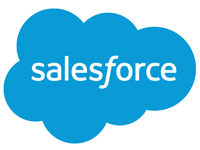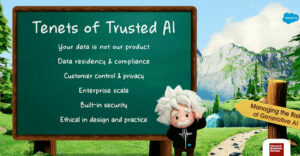As an industry, CRM continues to grow and shower benefits on its users. It’s hard to imagine that some businesses still don’t use some form of CRM, but the data presented in a new infographic from Algoworks suggests that businesses are still buying their first CRM solutions or changing vendors. It’s a compilation of data from all over, with some credible inputs from Gartner and others, so it’s worth taking a look.
Based on the graphic, only 49 percent of businesses have a CRM system, so there’s a lot of white space in the market, which suggests it’s possible for some upstart to swoop in. However, the history of markets indicates they go in the other direction, settling into a triopoly, and currently, there are just a few more competitors than that.
Breaking With the Past
With a compound annual growth rate of 15.1 percent between 2012 and 2017, according to Forbes, the industry is healthy.
According to Gartner, it’s generating US$36.5 billion in revenues, but that number needs to be considered in context.
Thanks to pioneer Salesforce, CRM was the first area of software to adopt Software as a Service, and that did two things to the revenue number. First, it flattened the number by charging for use rather than ownership, and that reduced the overall revenue you could have expected had the industry remained in the Siebel model of conventional software.
SaaS has also made the revenue stream more secure and repeatable. With multiyear deals, it’s easy for vendors to make their growth projections because so much of their revenue is already under contract. You could say that what SaaS takes away, SaaS gives back.
More useful for the customer is the return on investment. For every dollar spent on CRM, an average business earns back $5.60 — a good reason to not go without it or build it yourself.
Beyond those numbers, though, we can run into contention as adoption issues raise their heads. We still haven’t gotten away from the stereotypical salespeople who won’t use SFA (sales force automation) for fear of I don’t know what, maybe unicorns. Perhaps that’s why 43 percent of CRM customers use less than half of the features in their CRM systems.
That’s puzzling, but there are several explanations. CRM vendors might be delivering too much functionality through bundling. More realistically, though, CRM customers may use less because the technology doesn’t conform to their use practices.
Now, you can say a lot about use, but throughout my career in software, more than 30 years, I’ve noticed that organizations maintain bad or at least suboptimal business practices to the point of trying to make software emulate those ideas rather than using a new implementation to make a clean break with the past.
Every business believes it is unique and that its practices amount to its secret to success. In reality, though, hanging onto an old process for the sake of comfort both prevents fuller adoption and retards a business’ evolution. This is a debate that can’t be won — but also throughout my career, I’ve tended to tread cautiously when confronted with a CRM failure. Too often, it’s not the software that’s to blame but how it’s used.
Fine Fettle
Enough of that. One happy outcome has been the surge of marketing automation. For too long, marketing was a stepchild of accounting because businesses tried to control spending with early marketing automation packages rather than truly marketing.
That all changed with the introductions of Eloqua and Marketo. While both companies have been absorbed by larger entities, they remain influential for automating the marketing process using statistics, analytics, and newfangled metrics to boost marketing performance.
Mobile solutions continue to surprise. According to Algoworks, sixty-five percent of sales reps using mobile CRM have achieved their sales targets, while only 22 percent of reps using non-mobile CRM have done likewise.
In fact, 55 percent of salespeople will use phones and tablets exclusively to do their jobs. The numbers are similar, if slightly lower, for CRM users generally, a category that includes service and support as well as field service.
As we all should know, social media is no longer an option — it’s where customers are, and where smart vendors go to meet them. Up to 46 percent of consumers use social media when making purchase decisions.
So CRM appears to be in good nick. The market continues to offer white space even as vendors invent new apps based on artificial intelligence and machine learning, the next big wave for CRM. Less wonderful is the fact that the CRM customer may be having difficulty absorbing all the new technology — but as the saying goes, that’s a champagne problem.
When all is said and done, CRM may be reaching an asymptotic limit, a ceiling. With all of the technology available today, we don’t lack solutions. What we do need is better understanding and ways to use the stuff.
That comes from methods and training. It comes from being able to risk not performing a business process the same way we did it before CRM. That can be daunting, but we’re clearly entering the second half of CRM’s rollout, and second acts are notorious for efficiencies and economies that derive from methods.
Sure, there might be job losses, but if we can bite the bullet, it will also mean jobs gained in the more creative aspects of the vendor-customer ballet. Look at marketing automation pre- and post-Eloqua.
The opportunities and just plain fun that marketing processes have generated in a decade (not to mention increased revenues) are striking. So, as we enter the autumn selling season and a raft of announcements no doubt coming from Salesforce and Oracle, it looks like CRM is in good shape to continue its 20-year run.


























































CRM is a solution for most businesses .. at one place we can manage things related to sales, marketing, finance and many more with data security.